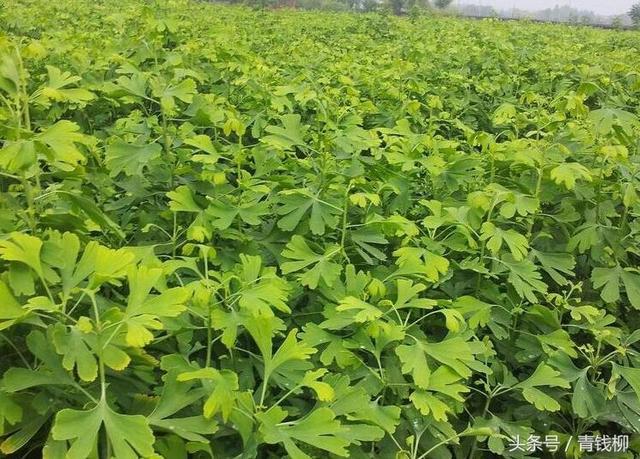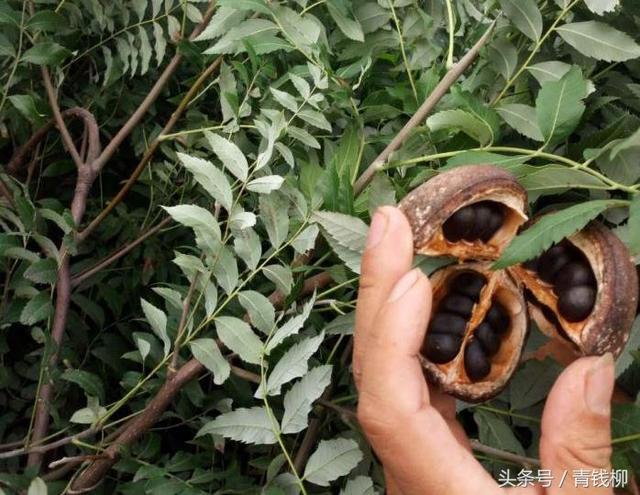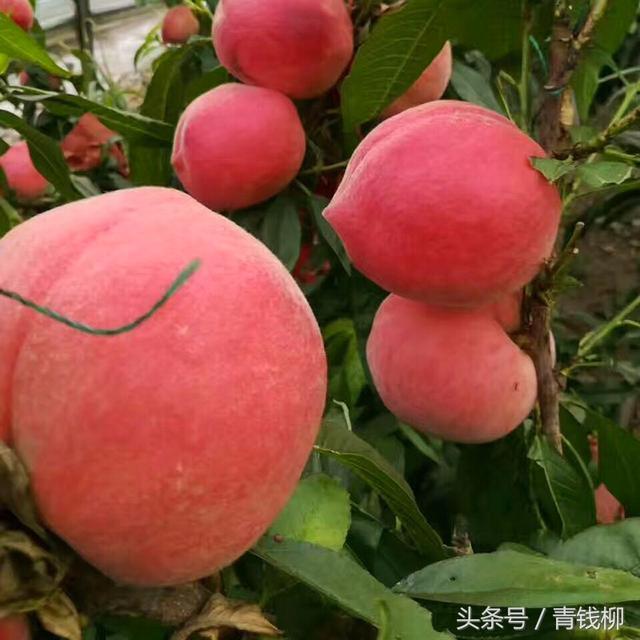Cultivation techniques of Ginkgo biloba for leaves

Cultivation techniques of Ginkgo biloba for leaves
Ginkgo biloba is a rare economic forest tree species unique to China, which has medicinal, edible, timber, ornamental and other values. total flavonoids and ginkgo terpene lactones can be extracted from leaves, which have unique pharmacological effects, clinical treatment and health care value. ginkgo biloba extract and its preparation have become the focus of research and development at home and abroad. Now the cultivation techniques of ginkgo biloba leaves are summarized as follows.
1. Land selection and preparation
Select the land with slope below 15 °, deep, moist, fertile, slightly acidic and neutral loam soil, convenient for transportation and management to establish a leaf garden. 15 t/hm 2 of farm manure, 750 kg/hm 2 of superphosphate and 300 kg/hm 2 of compound fertilizer were applied at the end of autumn and winter. Ploughing in autumn and winter can ripen the soil by freezing and thawing. At the same time, it is necessary to do a good job in drainage and irrigation facilities in conjunction with land preparation, so that it can be irrigated by drought and waterlogged.
(2) cultivate strong seedlings
The slightly acidic and neutral loam with flat terrain, sufficient light, soil layer above 50 cm, no stagnant water, convenient drainage and irrigation, fertile and loose loam was selected. The seedling density was 600000 ~ 630000 plants / hm 2 (seed amount was 1 875 × 2 250 kg/hm 2), and the plant-row spacing was 8 cm × 20 cm. Before sprouting in the following spring, the Winter Solstice in the autumn of the same year, one plant was removed, and the seedlings were transplanted or sold, leaving 300000 seedlings / hm 2; in the third year, after leaf harvesting in autumn, one plant was removed in autumn and winter, and 150000 seedlings / hm 2; after leaf harvesting in autumn in the fourth year, one row was removed in autumn and winter, and 75000 seedlings / hm 2 were retained. The planting density of seed nursery garden is high, which can not only pick leaves, but also sell seedlings.
3 planting
The strong seedlings of two to three years old with good root system, good root system and full bud eyes should be selected for planting seedlings with a diameter of more than 1.5 cm, which can take shape in 2 to 3 years after planting. It was planted from October to November in autumn and from late February to early March in spring. Before planting, the planting ditches of 20 to 30 cm in width and depth were dug, and the soil surface in the ditch should be adjusted appropriately according to the root size of seedlings. The roots of seedlings were treated with ABT rooting powder and carbendazim and dipped in mud. Put the ginkgo seedlings that have been soaked in mud in the ditch according to the plant spacing, straighten the seedlings and stretch the roots. One person holds the seedlings in line with the horizontal and vertical position, while the other slowly covers the roots with fine soil with a spade and pours enough water on the roots. Finally, the tree plate is covered with 1 m wide plastic film, which can keep moisture, increase soil temperature and facilitate survival, which is especially important in dry areas with less rain in winter and spring. The depth of the seedlings is slightly higher than that of the seedlings, and the covered soil should be concave and basin-shaped, in case the watering soil sinks so that the root neck of the seedlings is level with the surface.
Properly increasing the initial planting density is beneficial to increase the leaf yield. The soil is barren, the branch quantity of variety is small and erect, it should be dense; the soil is fertile, the branch quantity of variety is large, and it should be sparse. In general dense planting gardens, the plant-row spacing is 20 cm × 60 cm (83,370 plants / hm 2), 30 cm × 50 cm (66660 plants / hm 2), 30 cm × 60 cm (55,590 plants / hm 2), and the canopy density is 0.8 to 0.9. Single row type, plant spacing 60 cm × 60 cm (27,780 plants / hm 2), 50 cm × 80 cm (25,020 plants / hm 2), 40 cm × 100 cm (25,020 plants / hm 2). Wide and narrow rows, 2 rows, band spacing 1.0m, row spacing 70 cm, plant spacing 50 cm (23520 plants / hm 2).
4 Management after planting
4.1 fertilization
After planting in Ginkgo biloba leaf orchard, the leaf yield was increased mainly by applying a large amount of nitrogen fertilizer. During the growing period, topdressing was carried out combined with loosening soil and weeding, and topdressing was carried out 3 times a year. The first time, urea 300 kg/hm 450 kg/hm 2 was applied in the first half of March before sprouting, the second time, urea 375 500 kg/hm 2 was applied in the first ten days before the shoot growth peak, and the third time, the multi-component compound fertilizer containing phosphorus and potassium was applied in late July, or manure 7500 kg/hm 2 was applied. The method of fertilization was strip ditch method, that is, a ditch with a depth of 10 to 20 cm was opened between the rows, fertilizer was evenly applied into the ditch, and the soil was watered and filled. Simple application of nitrogen fertilizer can also be applied at acupoints.
Spraying 0.3% urea + 0.2% potassium dihydrogen phosphate or multicomponent organic compound fertilizer every month in the growing season can accelerate the growth of new shoots, increase the growth of branches in the same year, and improve the photosynthetic function of leaves and the fresh weight of single leaves.
4.2 Deep ploughing and loosening
Every autumn, interrow deep ploughing is carried out with the application of base fertilizer to facilitate soil ripening and air permeability. It is necessary to dig deeply and loosen the soil once a year, at least around the tree plate. At the same time, farm manure 3045 t/hm 2, calcium superphosphate 3000 kg/hm 2 and ammonium sulfate 450kg/hm 2 were applied. The strip ditch was used for fertilization, the ditch was opened between 2 rows and the depth of the ditch was 30-50 cm. The bottom of the ditch was filled with 20 cm thick mature farm manure and superphosphate, and then other fertilizers were mixed evenly. After filling, the bottom soil was sprinkled into the surface of the ground, watering and settling, and the tree ditch could be leveled after the water seeped.
4.3 timely irrigation and drainage
The soil should be watered with "sprout water" once after thawing in spring. Timely irrigation is needed during summer drought, otherwise high temperature and drought will make the leaves yellow and scorched, affecting the yield and quality of leaves. Before freezing, the soil was watered with "frozen water" once to improve the overwintering property of the tree. Most of the silver leaf orchards are flat, and trenches should be opened in the rainy season. Ginkgo biloba likes to be wet and afraid of waterlogging, such as poor drainage and stagnant water in the soil, resulting in anaerobic respiration of roots for too long and accumulating too much alcohol, which will lead to poisoned rotten roots, root asphyxiation, weakening the tree, and, in serious cases, the death of the whole plant; or lead to soil consolidation and poor ventilation, will cause yellow leaves and fallen leaves.
4.4 ploughing and weeding
By ploughing, weeding and loosening soil, not only the physical and chemical properties of soil can be improved, but also a lot of nutrition and water can be saved. Mid-tillage in spring is beneficial to soil moisture conservation, while mid-ploughing in summer and autumn is beneficial to drought resistance. Ploughing should be carried out in time after watering or precipitation. The number of times of intertillage should not be less than 4 times per year, and the depth of intertillage should not be less than 5: 10 cm.
- Prev

Characteristics and cultivation techniques of Xanthoceras sorbifolia
The characteristics and cultivation techniques of Xanthoceras sorbifolia, also known as Chaenomeles papaya, Wenguo fruit, Wendeng fruit, Mengming monk Dengmaodao, belong to the genus Xanthomonaceae in the plant classification, and belong to the only species, which is a unique woody oil tree species in the north of China. ...
- Next

Key techniques of peach pruning and pest control in summer
Key points of peach pruning and pest control techniques in summer peach shoots grow vigorously in summer, and new buds are precocious, which can sprout 3 ~ 4 times a year, with large and dense growth, improper pruning, often resulting in yield reduction and weakening of tree potential.
Related
- Wuhan Hospital Iron Tree Blooming Result Was Instantly Frightened by the Gardener Master
- Which variety of camellia is the most fragrant and best? Which one do you like best?
- What is the small blue coat, the breeding methods and matters needing attention of the succulent plant
- Dormancy time and maintenance management of succulent plants during dormancy
- Minas succulent how to raise, Minas succulent plant pictures
- What are the varieties of winter succulent plants
- How to raise succulent plants in twelve rolls? let's take a look at some experience of breeding twelve rolls.
- Attention should be paid to water control for succulent plants during dormant period (winter and summer)
- Watering experience of twelve rolls of succulent plants
- Techniques for fertilizing succulent plants. An article will let you know how to fertilize succulent plants.

